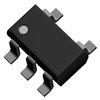-
Part Symbol
-
Footprint
-
3D Model
Available Download Formats
By downloading CAD models, you agree to our Terms & Conditions and Privacy Policy

IC SWITCHING REGULATOR, 1.85 kHz SWITCHING FREQ-MAX, PDSO5, 2.92 X 1.6 MM, PLASTIC, SOT23-5, Switching Regulator or Controller
Tip: Data for a part may vary between manufacturers. You can filter for manufacturers on the top of the page next to the part image and part number.
LMR62014XMFE by Texas Instruments is a Switching Regulator or Controller.
Switching Regulator or Controllers are under the broader part category of Power Circuits.
A power circuit delivers electricity in order to operate a load for an electronic device. Power circuits include transformers, generators and switches. Read more about Power Circuits on our Power Circuits part category page.
By downloading CAD models, you agree to our Terms & Conditions and Privacy Policy
|
|
LMR62014XMFE
Texas Instruments
Buy Now
Datasheet
|
Compare Parts:
LMR62014XMFE
Texas Instruments
IC SWITCHING REGULATOR, 1.85 kHz SWITCHING FREQ-MAX, PDSO5, 2.92 X 1.6 MM, PLASTIC, SOT23-5, Switching Regulator or Controller
|
| Part Life Cycle Code | Obsolete | |
| Ihs Manufacturer | TEXAS INSTRUMENTS INC | |
| Part Package Code | SOT-23 | |
| Package Description | 2.92 X 1.6 MM, PLASTIC, SOT23-5 | |
| Pin Count | 5 | |
| Reach Compliance Code | unknown | |
| ECCN Code | EAR99 | |
| HTS Code | 8542.39.00.01 | |
| Samacsys Manufacturer | Texas Instruments | |
| Additional Feature | ALSO OPERATE IN VOLTAGE ADJUSTABLE MODE FROM 0 TO 20V | |
| Analog IC - Other Type | SWITCHING REGULATOR | |
| Control Mode | CURRENT-MODE | |
| Control Technique | PULSE WIDTH MODULATION | |
| Input Voltage-Max | 14 V | |
| Input Voltage-Min | 2.7 V | |
| Input Voltage-Nom | 5 V | |
| JESD-30 Code | R-PDSO-G5 | |
| Length | 2.9 mm | |
| Number of Functions | 1 | |
| Number of Terminals | 5 | |
| Operating Temperature-Max | 125 °C | |
| Operating Temperature-Min | -40 °C | |
| Package Body Material | PLASTIC/EPOXY | |
| Package Code | TSSOP | |
| Package Equivalence Code | TSOP5/6,.11,37 | |
| Package Shape | RECTANGULAR | |
| Package Style | SMALL OUTLINE, THIN PROFILE, SHRINK PITCH | |
| Seated Height-Max | 1.2 mm | |
| Surface Mount | YES | |
| Switcher Configuration | BOOST | |
| Switching Frequency-Max | 1.85 kHz | |
| Temperature Grade | AUTOMOTIVE | |
| Terminal Form | GULL WING | |
| Terminal Pitch | 0.95 mm | |
| Terminal Position | DUAL | |
| Width | 1.6 mm |
This table gives cross-reference parts and alternative options found for LMR62014XMFE. The Form Fit Function (FFF) tab will give you the options that are more likely to serve as direct pin-to-pin alternates or drop-in parts. The Functional Equivalents tab will give you options that are likely to match the same function of LMR62014XMFE, but it may not fit your design. Always verify details of parts you are evaluating, as these parts are offered as suggestions for what you are looking for and are not guaranteed.
| Part Number | Manufacturer | Composite Price | Description | Compare |
|---|---|---|---|---|
| LMR62014XMFE/NOPB | Texas Instruments | Check for Price | SIMPLE SWITCHER® 2.7V to 14V, 1.4A Step-Up Regulator in SOT-23 Package 5-SOT-23 -40 to 125 | LMR62014XMFE vs LMR62014XMFE/NOPB |
Texas Instruments provides a recommended PCB layout in the datasheet, but it's also important to follow general best practices for high-frequency PCB design, such as using a solid ground plane, minimizing trace lengths, and using vias to connect signals to the ground plane.
To ensure stability, make sure to follow the recommended compensation network and component values, and also consider the output capacitor selection and PCB layout. Additionally, simulate the design using tools like SPICE or TI's WEBENCH to verify stability.
While the datasheet specifies a maximum input voltage of 15V, it's recommended to derate the input voltage to 12V to ensure reliable operation and to prevent damage to the device.
The LMR62014XMFE is rated for operation up to 125°C, but it's essential to consider the thermal design and ensure proper heat sinking to prevent overheating. Also, be aware that high temperatures can affect the device's performance and reliability.
Start by verifying the input voltage, output load, and PCB layout. Check for any signs of overheating, and ensure that the device is properly soldered and connected. Use oscilloscopes and other diagnostic tools to identify the root cause of the issue, and consult the datasheet and application notes for guidance.